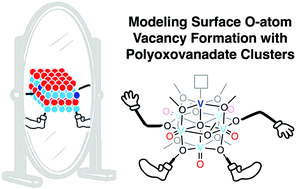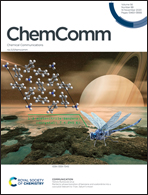Oxygen-atom vacancy formation and reactivity in polyoxovanadate clusters
Abstract
Reducible metal oxides (RMOs) are widely used materials in heterogeneous catalysis due to their ability to facilitate the conversion of energy-poor substrates to energy-rich chemical fuels and feedstocks. Theoretical investigations have modeled the role of RMOs in catalysis and found they traditionally follow a mechanism in which the generation of oxygen-atom vacancies is crucial for the high activity of these solid supports. However, limited spectroscopic techniques for in situ analysis renders the identification of the reactivity of individual oxygen-atom vacancies on RMOs challenging. These obstacles can be circumvented through the use of homogeneous complexes as molecular models for metal oxides, such as polyoxometalates. Summarized herein, a sub-class of polyoxometalates, polyoxovanadate–alkoxide clusters, ([V6O7(OR)12]n; R = CH3, C2H5; n = 2−, 1−, 0), are explored as homogeneous molecular models for bulk vanadium oxide. A series of synthetic strategies have been employed to access oxygen-deficient vanadium oxide assemblies, including addition of V(Mes)3(thf), tertiary phosphanes, and organic acids to plenary Lindqvist motifs. We further detail investigations surrounding the ability of these oxygen-deficient sites to mediate reductive transformations such as O2 and NOx1− (x = 2, 3) activation.



 Please wait while we load your content...
Please wait while we load your content...